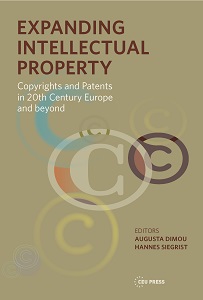Intellectual Property Rights and the Dynamics of Propertization, Nationalization, and Globalization in Modern Cultures and Economies
Intellectual Property Rights and the Dynamics of Propertization, Nationalization, and Globalization in Modern Cultures and Economies
Author(s): Hannes Siegrist
Subject(s): Civil Law, International Law, Transformation Period (1990 - 2010), Present Times (2010 - today)
Published by: Central European University Press
Keywords: Propertization;Nationalization;Globalization;Intellectual Property
Summary/Abstract: Property (in a generic sense) and intellectual property (an encompassing category for copyrights, patents and trademarks) are central elements of the institutional and constitutional order of modern cultures and societies. “Property” refers to a bundle of exclusive rights and entitlements which institutionalize (i.e., regulate) the usage, control and transfer of material and immaterial goods. Property rights define and institutionalize social relations between individuals, groups, organizations, and states in a particular mode, namely as property-based relations. They define and sanction a) the interaction between social actors and b) the relationship between a legal subject and a material or immaterial object. They institutionalize the cooperation, communication and competition among social actors such as entrepreneurs and workers, owners and nonowners, producers, mediators and users. They determine the allocation and usage of goods or assets such as land, buildings, technical equipment, financial capital, forms of expression and useful new technical knowledge. Thus, material and immaterial property rights belong to the broader category ofexclusive long-term rights, which are expected to stabilize social relations and hierarchies, to integrate societies and to regulate exchanges. The histories of material and immaterial property rights differ in some respects but are fundamentally connected and complementary. In the following chapter I will focus on the history of propertization (as well as de- and repropertization) in the spheres of information, cultural artifacts, symbols, forms of expression, and scientific and technical knowledge in the contexts of nationalization and globalization of cultural and economic relations. Propertization means that relationships between persons, organizations and objects are increasingly conceived and regulated as property-based relations. Because the meanings, functions and effects of intellectual property rights depend on the general social, cultural and institutional setting in which they are embedded, I will outline the history of intellectual property rights within the general history of culture, science, economy and politics. I will do this specifically by connecting the history of propertization with the histories of the nationalization and globalization of cultural relations. These three forms and strategies of institutionalization and organization are fundamental to an understanding of the dynamics of modern societies, economies and cultures. I will examine how these strategies have been combined at different times and in different places; and whether they hindered or consolidated one another. This will help us to explain, and subsequently understand, the history of the expansion of intellectual property rights.
Book: Expanding Intellectual Property. Copyrights and Patents in Twentieth-Century Europe and Beyond
- Page Range: 19-47
- Page Count: 29
- Publication Year: 2017
- Language: English
- Content File-PDF

